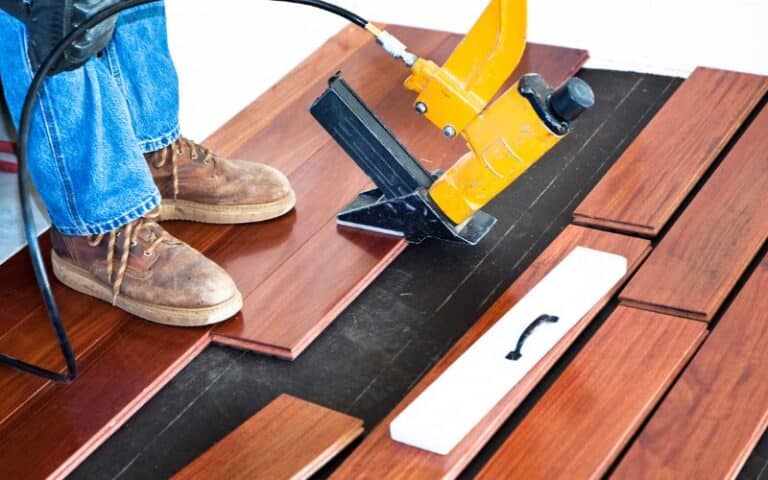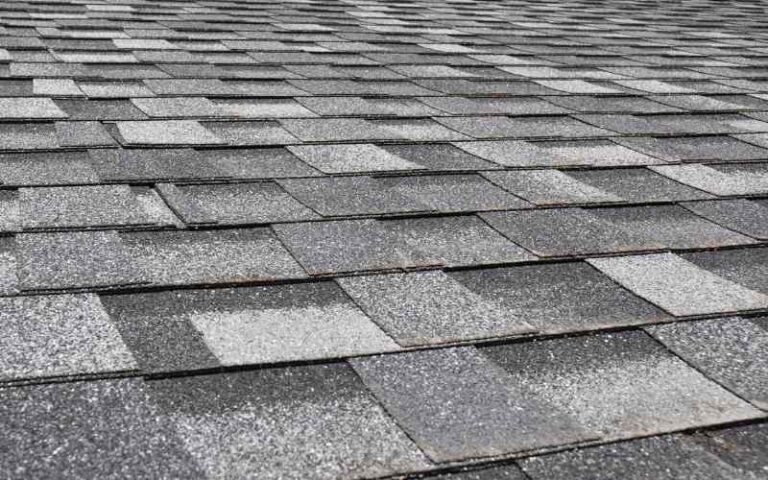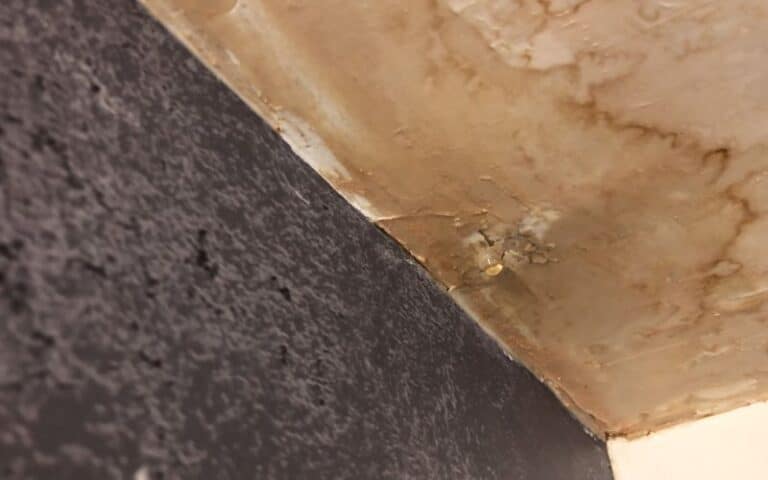Roofing installation can go awry if you do not follow due process in placing each roof component. But even after doing it right, your roof may leak after some time.
The nails on the roof might be the reason for the leakage. The roofing felt also consists of bitumen, which keeps the felt underlayment waterproof.
However, does this property cause the roofing felt to seal around the nail?
Roofing felt seals around the nails holding the felt together. The bitumen in the roofing felt contracts and expands with a change in weather. This will constantly seal and sometimes unseal around the nails. If you apply too much glue on the roofing, it will tear and cause leakage.
Ready for a Roofing Quiz?
Why Does Roofing Felt Seal Around Nails?

Roofing felt seals around nails because of their expansion property. When there is a change in the weather, the installed roof felt expands or contracts.
Because of this, it seals around the nails and may sometimes cover the nail heads. The type of roofing felt used also affects how the roof felt would last.
There are mainly two types of roofing felts:
#1. 15 Pound Roof Felt
This type of roof felt has a lower thickness. It tears easily because of its lighter weight, and it can leave holes on your roof, especially around the nails.
During rough weather changes like a storm, a 15-pound roof felt will come and leave the house bare.
#2. 30 Pound Roof Felt
This roof is heavier and less likely to tear. It is also a better moisture barrier than the 15-pound felt. This roof is a better choice for keeping leakages out, as it is more durable than its alternative.
It also has a firm grip, therefore less prone to causing accidents during installation.
What Are the Best Nails for Roofing?
Selecting the best nails for your felt roofing is essential. The higher the quality of the roofing nail, the sturdier your roofing.
The correct felt roofing nail for the job is often a challenge to purchase.
Contractors usually recommend nails they consider the best for your roofing. Here is a chance to find out if your contractor is right:
#1. Galvanized Nails
Contractors use galvanized nails in almost all construction nailing like shingle and roof felt installation as they are durable in any weather condition.
These nails have coatings of layers of zinc which can withstand rust. Unlike other types of nails, they are very durable and can last for years.
Galvanized nails are great for housing in harsh weather areas. There are two types of galvanized nails, electro-galvanized, and hot-dipped galvanized nails.
Hot dipped nails are the best quality of galvanized nails. So, these nails have a lifespan of about 50 years.
#2. Clout Nails
These are also called felt nails and are frequently used on soft materials like plasterboard and mostly on roof felt. It has a large cap with a short shank.
Because of the large cap, the nail can spread the load directly under the top of the nail. Clout nails have a firm grip on the roofing felt.
I recommend the Forgefix Clout Nail for your roofing felt installation.
#3. Steel Cap Nails
These nails are made for a wide variety of applications. Contractors use it for roofing felt application, foam insulation, house wrap, and general construction work.
Contractors often use it more than plastic head nails because it is sturdier and has a longer life span. The steel cap nails have a steel nail shank and a polyethylene head to stop leakage.
Can You Screw Through Felt?
You can use a screw gun to screw down the wafer head screw into your roofing felt. The wafer head screw has a large-cap size like clout nails and is faster and noiseless when you install it with a cordless drill.
Ensure to check the width of the roof timber before selecting the size of the wafer head screws.
How to Repair Knackered Roofing Felt?
Underlayment is a necessary part of your roofing. It is a moisture barrier that keeps your house dry. When you notice leakages, there are damages in your underlayment.
In addition, roofing felt repels moisture, which could cause mildew and knackered roofing felt.
A common downside of felt roofing is that it doesn’t last very long. Some of these techniques are oil and chemicals to keep the waterproof felt layer from cracking.
You should always check your roof regularly, especially after harsh weather changes like storms, to ensure there are no torn areas.
To replace roof felt, you will need:
- Pry bar
- Utility knife
- Measurement tape
- Hammer Tacker
- Staples
To change your knackered roof felt:
- Use a pry bar to remove the roof shingles above the knackered roof felt. With the pry bar, break the seal holding the shingles. Ensure to remove the shingles as gently as possible to avoid breakage. Shingles are brittle, so treat them with care.
- Slowly use the pry bar to remove the shingles until you get close to the roofing nail. Next, carefully raise the shingles to an inch. Press the pry bar down until the roofing nail comes off a bit. Then use the bar to remove the roofing nail. Repeat this procedure until the roofing felt nails are all out.
- Remove the remaining shingle above the damaged felt area. Then use a utility knife to cut the damaged area. Finally, take out the knackered roof felt.
- Rid the open wood sheathing of dirt and staples by cleaning the area. If the wood is rotten, replace it before changing the roof felt.
Measure the damaged sheathing, adding five inches to each measurement on all sides. Use the measurements to cut out new roofing felt to replace the damaged one. - Before proceeding, ensure the wood sheathing is dry. Cover the open area with the replacement and use the Arrow hammer tacker and T50 staples to secure it.
Ensure the bottom part of the new roofing felt overlaps the old felt below it, while the top part should be below the old felt. It controls the water flow on the roofing felt and keeps it from seeping under it. - Place the shingles back in their positions. Start from below the wood and to the top. Tightly secure the roofing shingles with the nails you pulled out.
Conclusion
Roofing felt seals around nails because of their expansion factor. This is often due to weather changes. Using correct roofing felt nails for your roofing is essential as it saves you repair costs from leakages.
Once you notice leakage from your roof, check it for damages, especially from the installed roofing felt. Then, you could either fix it yourself or consult an expert for the repairs.






